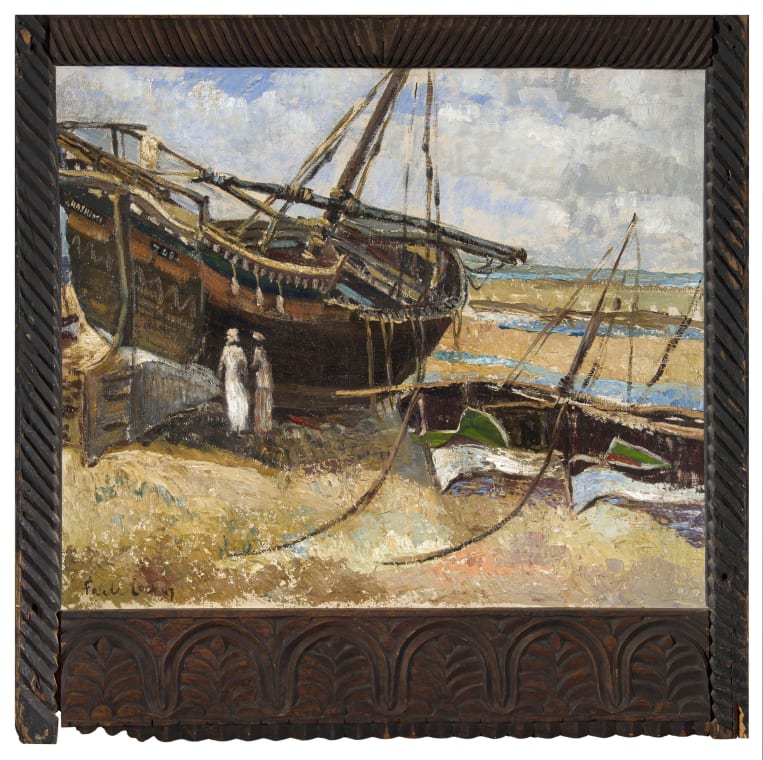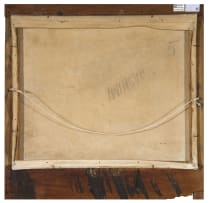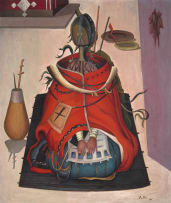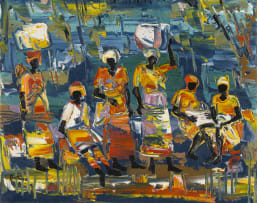Modern and Contemporary Art
Live Virtual Auction, 28 March 2023
Evening Sale
Incl. Buyer's Premium & VAT
About this Item
signed and dated 47; inscribed with the title on the reverse
Notes
Many of our great South African artists have found fascination and inspiration in the Swahili and Arab cultures of the islands and port towns on the East African coast. JH Pierneef, Alexis Preller, Terence McCaw, Walter Battiss, and Irma Stern all visited these areas. Freida Lock was quick to follow in Irma Stern’s footsteps, travelling to Zanzibar a mere 2 years after Stern had left. Between 1947 and 1949, Lock enjoyed a lengthy 18-month stay in Zanzibar. Unlike most foreigners, Lock became known to the Arab community and was invited into local homes where she became closely acquainted with the culture. The jostling markets, the dhow harbours, the music and singing at wedding feasts fascinated her, appealing to her passionate nature and love of the exotic.1
Upon considering Lock’s oeuvre, an enchantment with architecture is readily apparent. This extends from the architecture of Lock’s colourful Cape interior scenes to her depiction of Arab homes upon her travels, and even in her sensitive approach to dhows and other boats in the fishing and trade culture of East Africa. This is especially evident in Hashimi with its delicate depiction of each mast, rope, and wooden vessel.
The impressive Zanzibari frame that cradles this work is not merely a framing device, but also a cultural construct through which to view the scene. The frame was likely constructed from recycled doors and window frames. The designs are redolent with symbolic significance and invocations for benign protection. The rope-like design on the top and side portions of the frame speaks to the fishing trade and is often found on the outermost strip of door frames, where they are intended to keep evil forces at bay. The lower strip of the frame features a palmette motif, likely representing the trade of herbs and spices.
1. Johannes Meintjes (1961) Die Dagboek van Johannes Meintjes, Molteno: Bamboesberguitgewers, Vol 2, 20 November 1948, page 63.
Provenance
Acquired from the artist by the previous owner, thence by descent.









